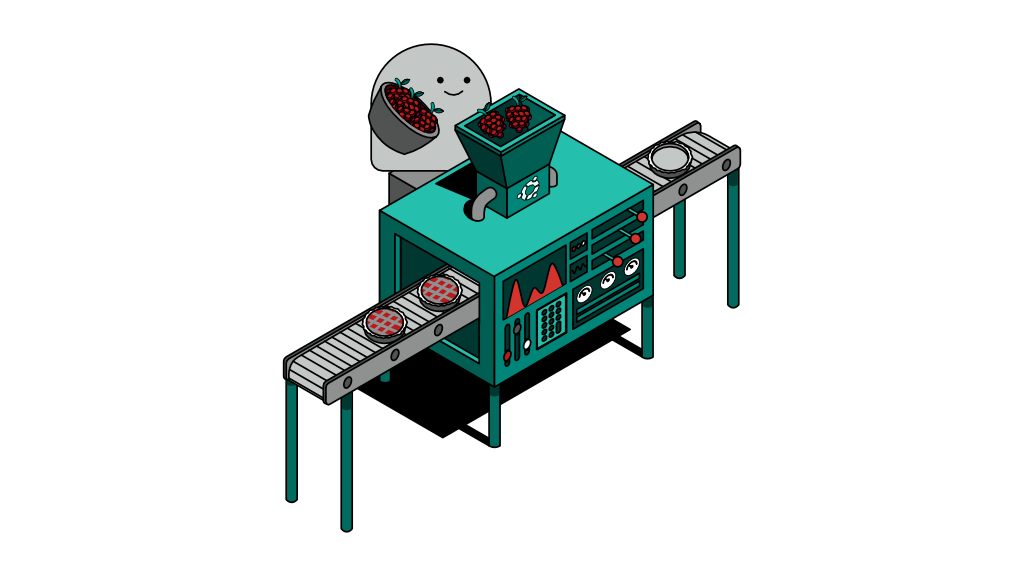The 10 Hungry Monkeys

Culture and traditions exist in every society including the workplace. But have you ever once stopped to wonder why some things are done in a certain way? This article explores why we should not stop seeking an understanding of practices and behaviour around us, through a story we can learn from our primate friends.
The 10 Hungry Monkeys
As part of a sociological experiment, a group of scientists brought 10 monkeys in and confined them in a huge cage where they can roam around.
In the cage, there was a ladder leading up to a bunch of golden bananas. To the 10 hungry monkeys that had not been fed for 12 hours, the bananas were more than just a treat, they were their only source of food for survival. All the monkeys spotted the bananas and immediately, the strongest monkey began to climb with much anticipation. As it was climbing, an electric jolt ran down the ladder shocking and preventing it from ascending further. At the same time, the other hopeful monkeys on the floor were sprayed with water. The strongest monkey scrambled off and other monkeys sat still on the floor for a while.
Soon, the temptation of the bananas was too great as their hunger pangs became unbearable. Another brave monkey began to climb the ladder again, and again, was met with the same electric jolt. Other monkeys were again sprayed with water. At this point, all the monkeys knew very well not to reach for the forbidden fruit. They feared the consequences.
The scientists then removed one monkey from the cage and replaced it with a new primate. Naturally, after spotting the bananas, the new monkey headed towards the ladder. Sensing what the new monkey was up to, other monkeys cut it off and beat it before it could climb the ladder.
Repeating their previous step, the scientists then removed another one of the original 10 monkeys and replaced it with another new monkey. Again, the new unwitting monkey was beaten by the others, despite never actually making it to the ladder.
By the end of the experiment, all the 10 original monkeys were replaced. Yet, no monkey had tried to climb the ladder let alone reach the top, though none of them ever experienced the electric jolt nor the splash of water.
Lesson for humans
So here's the thing. There is no evidence of the experiment being conducted at all in the first place, but regardless, it is a tale that teaches a great deal about the culture and traditions we hold on to. There is no denying they are important for various reasons e.g. to drive certain behaviour, establish an identity or bring a group of people to collaborate with each other.
This is not an argument of whether culture and traditions should stay or go, but whether we question enough why we do what we do. If we think we are spared from the trap of groupthink and this is a phenomenon that is observed only in the animal kingdom, it's probably the reason why we sometimes don't see the need for change and never progress as a result. As the saying goes:
Great minds think alike but fools rarely differ
in the workplace, you often see new joiners - being the best they can - adhering to the norms within the company. This is all great for this is how standards, operational efficiency and quality are achieved in the first place. The problem starts when people stop questioning and unthinkingly conform to certain established ways even when logic dictates otherwise. It’s always important to seek an understanding of how certain things came about. For those who are enlightened and want to effect change, here’s what you can do.
What you can do to instill change
Instead of questioning things as they are, state your feelings towards the particular behaviour. Most people empathise. It also helps to open doors for difficult but necessary conversations within a team or organisation. The point is not to object but to seek genuine clarity as to why some things are done in a certain way. There could be many reasons including legacy issues. Even so, some things that were set in stone could had been the result of one or few bad apples. It’s worth revisiting these norms and evaluate if they are still relevant in the current context.
When you are ready to share your discovery and a better way forward, formalise it by setting up a one-on-one meeting with your manager. Going into a meeting with a clear agenda helps to command an air of seriousness and her undivided attention. The last place you would want to bring this up is during a team meeting where everyone would chime in on their updates. You do not want to stick out like a sore thumb and be met with an awkward silence.
And of course, all of this is only possible in an environment where there is psychological safety, where people do not feel penalised for having the courage to speak the inconvenient truth. Ultimately, it is up to the leadership team to decide how best to handle the change. Handle the challenge of change well, and you can prosper greatly. Handle it poorly, and you put yourself and others at risk.


